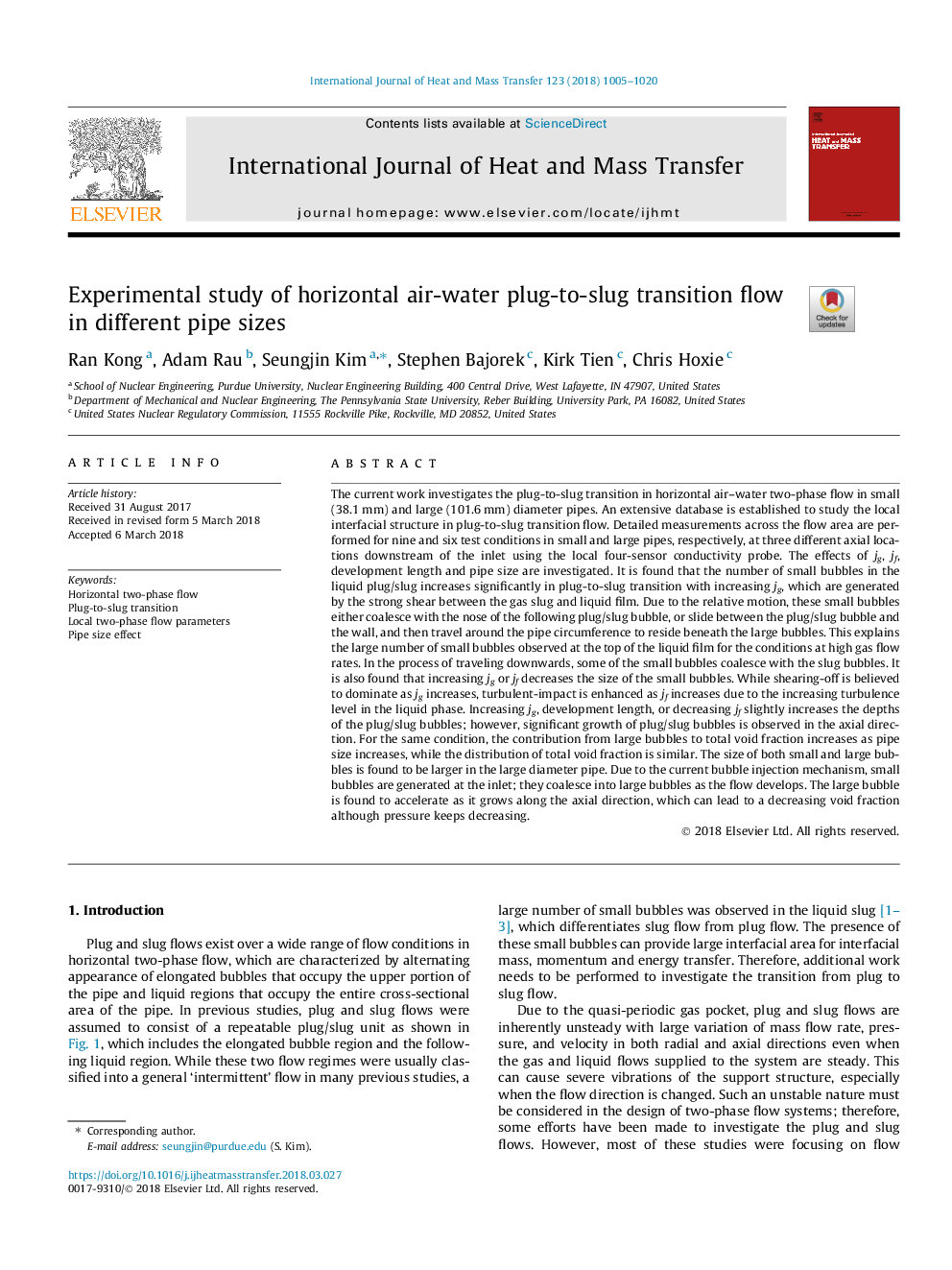| Article ID | Journal | Published Year | Pages | File Type |
|---|---|---|---|---|
| 7054342 | International Journal of Heat and Mass Transfer | 2018 | 16 Pages |
Abstract
The current work investigates the plug-to-slug transition in horizontal air-water two-phase flow in small (38.1â¯mm) and large (101.6â¯mm) diameter pipes. An extensive database is established to study the local interfacial structure in plug-to-slug transition flow. Detailed measurements across the flow area are performed for nine and six test conditions in small and large pipes, respectively, at three different axial locations downstream of the inlet using the local four-sensor conductivity probe. The effects of jg, jf, development length and pipe size are investigated. It is found that the number of small bubbles in the liquid plug/slug increases significantly in plug-to-slug transition with increasing jg, which are generated by the strong shear between the gas slug and liquid film. Due to the relative motion, these small bubbles either coalesce with the nose of the following plug/slug bubble, or slide between the plug/slug bubble and the wall, and then travel around the pipe circumference to reside beneath the large bubbles. This explains the large number of small bubbles observed at the top of the liquid film for the conditions at high gas flow rates. In the process of traveling downwards, some of the small bubbles coalesce with the slug bubbles. It is also found that increasing jg or jf decreases the size of the small bubbles. While shearing-off is believed to dominate as jg increases, turbulent-impact is enhanced as jf increases due to the increasing turbulence level in the liquid phase. Increasing jg, development length, or decreasing jf slightly increases the depths of the plug/slug bubbles; however, significant growth of plug/slug bubbles is observed in the axial direction. For the same condition, the contribution from large bubbles to total void fraction increases as pipe size increases, while the distribution of total void fraction is similar. The size of both small and large bubbles is found to be larger in the large diameter pipe. Due to the current bubble injection mechanism, small bubbles are generated at the inlet; they coalesce into large bubbles as the flow develops. The large bubble is found to accelerate as it grows along the axial direction, which can lead to a decreasing void fraction although pressure keeps decreasing.
Keywords
Related Topics
Physical Sciences and Engineering
Chemical Engineering
Fluid Flow and Transfer Processes
Authors
Ran Kong, Adam Rau, Seungjin Kim, Stephen Bajorek, Kirk Tien, Chris Hoxie,
